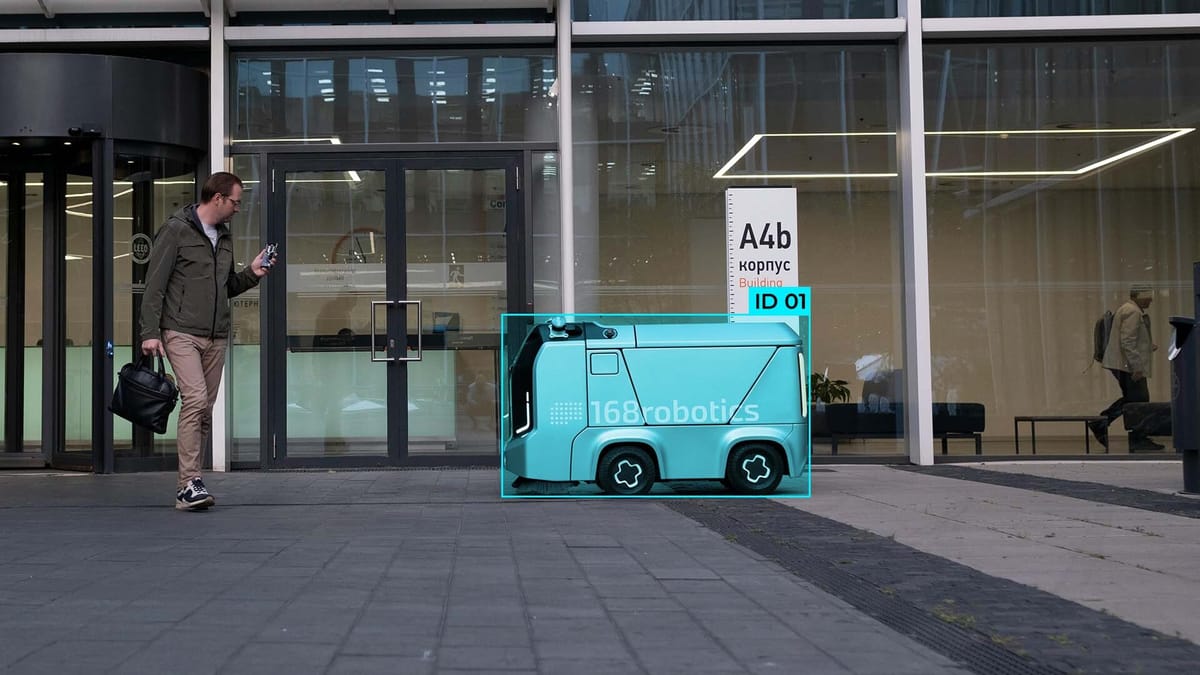Robotics Manipulation Training with Human Demonstrations

Modern machines still struggle with elemental tasks that humans perform instinctively. Opening doors or arranging objects on cluttered shelves is often beyond their current capabilities. Various programs are currently addressing this problem by teaching robots to learn from human actions rather than through rigid programming.
The secret lies in multi-layered models that combine sensory data with behavioral patterns. Through experiential learning, machines master skills of varying complexity, from delicate grasping of objects to working with sophisticated tools.
Key Takeaways:
- Combining theory with practice in structured and dynamic environments.
- Integrating verified control systems with modern imitation learning.
- Interacting with the environment through sensorimotor integration.
- Focusing on the generalization of skills, not just repetitive operations.
Conceptual Basis
The process of teaching a robot manipulation skills from a human is a clearly structured pipeline, where each step transforms human behavior into autonomous robot operation. At its core is Imitation Learning.
Demonstration Collection
At this stage, human knowledge and skills are converted into digital data. The human operator performs the target task. This can be achieved through:
- Kinesthetic Teaching. The human guides the robot's arm.
- Teleoperation. Control via controllers, VR gloves, or master-manipulators.
- Sensor Recording. Cameras, motion capture systems, or sensors on the tools record the exact trajectory, speed, and force necessary for successful dexterous manipulation. The result of these manipulations is a set of (state, action) pairs. That is, what the human saw (state) and what they did (action) at that moment.
Data Processing and Representation
Raw data from the sensors is cleaned, normalized, and converted into a format understandable by the model. The system recognizes the key elements of the demonstration:
- Trajectories. Sequences of grasp positions and orientations.
- Objects. Positions, shapes, and interaction of target objects.
- Segmentation. Identifying which parts of the movement are critical. For example, the "grasping phase," the "relocation phase," or the "interaction phase." Instead of storing every single point, the system creates a generalized representation of the behavior that will be invariant to small changes in initial conditions.
Policy Learning
This stage can be called the core of Imitation Learning. The system learns a function that maps the current environmental state to the robot's action.
Typically, a deep neural network is used, which acts as the "controller." The model learns to predict actions based on the current state. It learns the general structure of the behavior and the goals: first grasp the object, then move it to the area, then release it. This allows it to transfer the skill to similar, but not identical, scenarios.
Execution and Adaptation
The learned policy is tested and refined in the real world. The robot uses it for autonomous task execution. At this stage, a Human-in-the-loop approach can be applied. The operator can intervene to:
- Evaluate the robot's actions;
- Make small corrections to the trajectory during execution to adapt the movement to unforeseen circumstances.
The acquired skill can serve as an excellent starting point for further refinement using Reinforcement Learning, allowing the robot to achieve optimal efficiency.
Integration of Human Demonstrations in Robot Training
Human experience is the bridge between rigid programming and real-world adaptability. Systems analyze physical actions through advanced observation frameworks, learning to reproduce human skills.
Within Imitation Learning, various learning methods exist that the robot uses to transform human demonstrations into an operational skill.
Behavioral Cloning
This method involves the robot learning to predict "which action corresponds to which state." This is a direct mapping from input sensory data to the necessary control actions.
Essentially, this is standard Supervised Learning, where (state, action) pairs from demonstrations serve as training examples.
However, if the robot deviates slightly from the trajectory shown by the human during execution, due to noise or error, it enters an "unfamiliar" state. Since it was not trained on how to act in this new state, it does not know how to return to the correct trajectory, and the error quickly compounds.
Inverse Reinforcement Learning
IRL is a more intelligent approach that focuses not on copying but on understanding human intent.
Instead of copying actions, the robot attempts to infer the Reward Function that the human was likely maximizing during the demonstration. In other words, it asks: "What was the goal?"
The robot understands that the human performed movements non-randomly, but to achieve a specific goal. By inferring this goal, the robot can then autonomously achieve the same objective, even in new conditions or when the original trajectory is blocked. Its advantage lies in better generalization and robustness.
Hybrid / Self-Improving Models
The most successful modern systems often combine both methods. Behavioral Cloning or another Imitation Learning method is initially used to quickly acquire a basic, albeit non-ideal, skill.
Then, the robot transitions to Reinforcement Learning. It begins to experiment in the real world or in simulation, using the demonstrations as a starting point, and independently improves its skills to achieve optimal performance.
This approach is standard in real-world projects that require high dexterous manipulation, including developments from Google DeepMind, Boston Dynamics, and OpenAI Robotics, where demonstration-based training minimizes experimentation time.
Modern Approaches
Manipulation training from demonstrations is at the forefront of robotics, largely due to the integration of deep learning and the development of universal models.
Use of Deep Learning in LfD
Neural networks have transformed LfD from simple trajectory playback methods into powerful behavioral generalization systems.
The neural network serves as a direct mapping from perception to action. It directly takes input data, such as camera images or the robot's joint states, and converts them into output actions, namely torques, speed, or movement commands. This allows the robot to make decisions in real-time based on the current state.
Visual Imitation is a particularly interesting approach where the robot learns by observing video of a human performing a task. Thanks to convolutional and transformer networks, the robot can extract visual features and imitate actions without needing to record precise joint coordinates.
Examples of Practical Application
Robot manipulation training using human demonstrations finds its niche in areas where precision, flexibility, and safety are paramount. This allows robots to quickly acquire complex, "human-like" skills.
Manufacturing
In the context of flexible and high-tech manufacturing, Imitation Learning enables robots to be quickly reprogrammed for new tasks without writing complex code.
Robots learn to manipulate and join delicate components, such as electronics, glassware, or microchips. The human operator demonstrates the precise level of force and speed needed for dexterous manipulation, which minimizes manufacturing defects.
Similarly, by observing a worker, a robot can quickly learn to assemble a new product model or execute complex motions that are difficult to specify manually.
Domestic Robots and the Service Industry
For integrating robots into human environments, skills that we consider mundane are essential:
- Cooking and Food Preparation. Robots learn to accurately repeat complex sequences of movements based on videos or demonstrations by experienced chefs. This requires high adaptability to uneven and variable objects.
- Folding Laundry and Cleaning. Training robots for complex tasks like folding towels or loading a dishwasher, where precise handling of delicate or non-rigid objects is necessary.
Medicine and Surgery
In the medical field, where accuracy is vital, training from demonstrations enhances safety and effectiveness:
- Robot Surgeons. Robotic systems learn precise, micron-level movements by observing video recordings or direct demonstrations from highly qualified surgeons. Imitation Learning creates an initial motion policy that can then be adapted to the patient's individual characteristics, often using human-in-the-loop mechanisms for monitoring.
- Rehabilitation. Robot assistants can imitate the therapeutic movements of specialists to assist patients.
Space and Extreme Environments
In environments where direct human physical intervention is limited or impossible, imitation learning is key.
Manipulators on space stations or underwater vehicles learn to perform repair or assembly work by observing simulations or teleoperations executed by operators on Earth. This is necessary for operating in zero gravity or high radiation environments.
Thus, the future of intelligent automation belongs to systems that learn through observation rather than through coding. A key factor is high-quality sensory data that captures the nuances of interaction. This enables robots to adapt to new objects without reprogramming, reducing the need for human intervention.
FAQ
What is the main difference between teaching a robot through demonstration and traditional programming?
Traditional programming requires hard-coded code for each movement. Instead, LfD, or Learning by Imitation, allows robots to learn skills simply by observing human actions. Instead of writing thousands of lines of code, a human shows the robot how to perform a task, and the robot creates a generalized model of behavior.
What is Behavioral Cloning, and what is its main drawback?
Behavioral Cloning is the simplest LfD method, where a robot directly copies the actions of a human. Its main drawback is that if the robot deviates from the shown trajectory due to a small error while performing a task, it enters an “unfamiliar state.” Since it has not been taught how to act in this new state, it does not know how to correct the error, and it accumulates quickly.
How does Inverse Reinforcement Learning solve the problem of copying errors?
Unlike simple copying, IRL focuses on understanding human intent. The robot tries to understand not what the human is doing, but what goal the human is maximizing. Once the goal is understood, the robot can autonomously achieve it, even if the initial trajectory is changed or blocked. This provides better generalization and robustness.
How has deep learning and Visual Imitation changed LfD?
Neural networks have transformed LfD from a simple path-replication system to a powerful behavioral generalization system. Visual imitation allows the robot to learn by simply watching a video of a human performing a task. The networks extract visual cues and imitate actions without the need for precise joint coordinates.



Comments ()